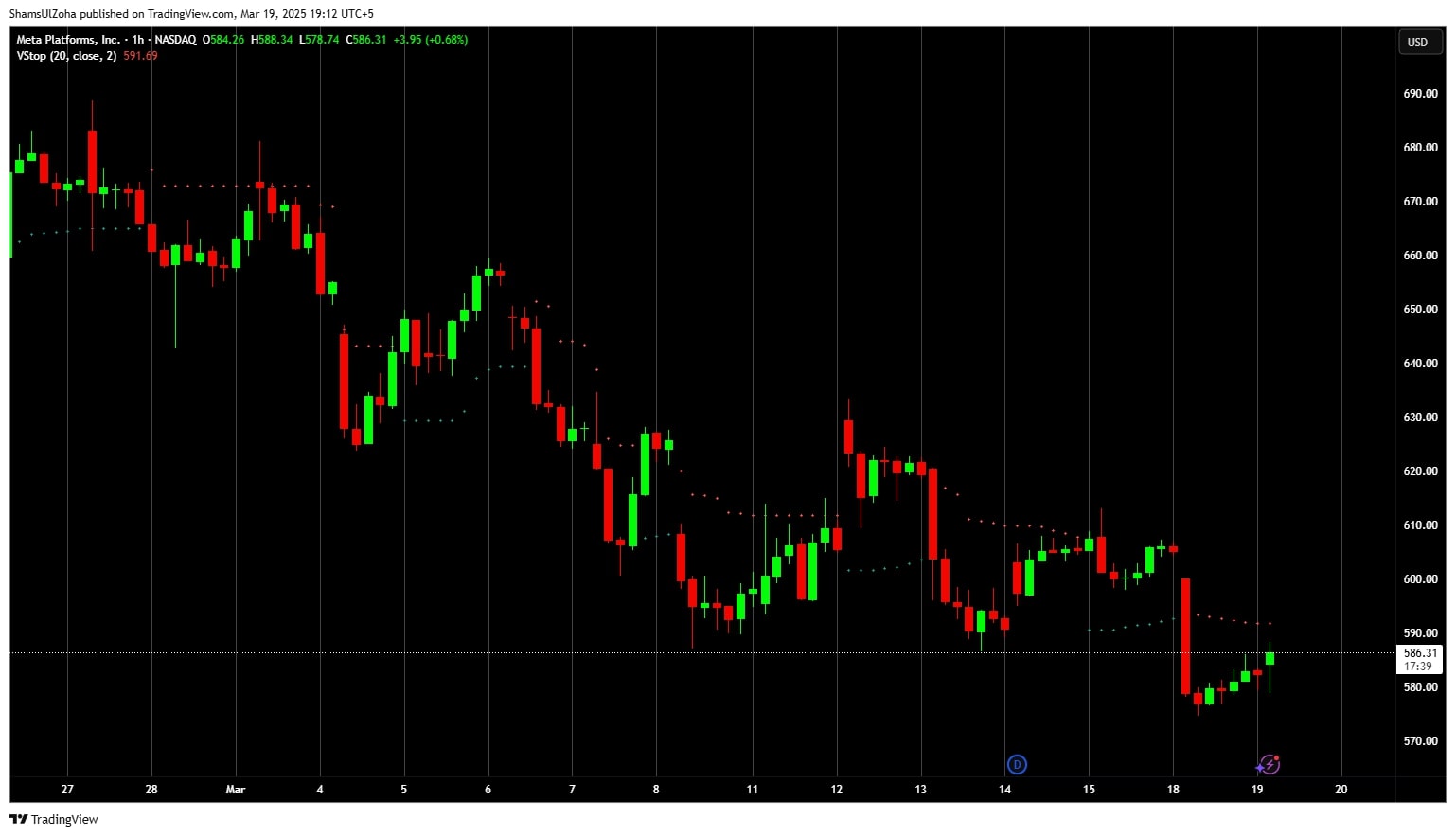A volatility stop, while not a trading indicator, is an essential stop-loss strategy that helps traders manage risk by dynamically adjusting stop levels based on market conditions. Unlike a fixed stop order, a volatility stop adapts to market volatility, ensuring that trades have enough room to develop while still protecting profits.
Think of a volatility stop like using windshield wipers in a storm, The storm (volatile market conditions) is inevitable, but by adjusting your wipers (trailing stop loss), you maintain a clear view of the road while minimizing risk as volatility fluctuates.
For systematic traders, using a trailing stop based on volatility offers a significant advantage over static stops. It prevents premature exits, while ensuring that we can lock in profits as a trade moves in our favor.

How Volatility Stops Work in Trading?
A volatility stop is a type of stop-loss order that adjusts dynamically based on the true range indicator of price movements rather than a fixed stop level. Traders often use the ATR (Average True Range) to measure market volatility and determine an optimal stop-loss level.
1. Average True Range (ATR) Volatility Stop
The Average True Range (ATR) is one of the most widely used tools for setting a volatility stop. It calculates the average range between the high and low price over a defined period, helping traders determine how much a stock’s volatility fluctuates.
To set a volatility stop using ATR:
- Multiply the ATR value by a factor (usually between 2 to 3) to determine the stop loss distance.
- Subtract the result from the entry price for a long position (or add for a short position).
- Place the stop at this calculated stop-loss level.
For example, if the ATR value of a stock is $1.50 and you’re in a long position, you might place an initial stop $3.00 below the current price (ATR * 2). This approach ensures that your stop is placed at a level that adapts to market volatility, allowing trades to run while still managing risk.
2. Other Types of Volatility Stops
Beyond ATR stops, there are several other ways traders can place stops based on volatility:
-
Trailing Stop Adjusts Dynamically: A dynamic trailing stop moves as the trade progresses, locking in profits while allowing for normal price fluctuations.
-
Highest High/Lowest Low Stops: These stops adjust to the highest high or lowest low over a defined period, ensuring the stop remains in a logical position relative to the trend.
-
Swing Chart Stops: These trailing stops help traders adapt to market volatility by following swing points, ensuring stops are not too close to the price action.
-
Gann Angle Stops: A type of stop that moves at a fixed rate of change, ensuring consistency in stop placement.
Systematic Trading Perspective: Why Rules Matter
In systematic trading, stop-loss strategies must be rules-based to eliminate emotional decision-making. A trailing stop automatically adjusts according to market conditions, making it an essential tool for traders who want to protect profits and minimize risk.
- Objective & Rule-Based Execution: A stop-loss level based on market volatility ensures a logical exit strategy rather than arbitrary placement.
- Backtesting for Optimization: Traders can backtest different stop loss levels to find the most robust way to manage risk.
- Maximize Profits: By adapting to market volatility, traders can let profits run while still ensuring a well-defined exit strategy.
Example: Using ATR in a Systematic Trading Strategy
Imagine trading a trend-following system that uses a 50-period moving average to define trade direction. After entering a long position, the trader uses ATR to set a trailing stop that dynamically adjusts as the trade progresses.
By fine-tuning the ATR stop multiplier, the trader ensures that the stop is triggered only when the market has reversed significantly, rather than on minor fluctuations. This trailing stop can help keep profitable trades open longer while locking in profits when momentum shifts.
Challenges of Using Volatility Stops in a Trading System
Despite their advantages, volatility stops come with potential drawbacks:
-
Over-Optimizing ATR Settings: Setting a trailing stop loss too tight may cause premature exits, while too wide of a stop can result in larger drawdowns.
-
Choppy Market Conditions: In a sideways market, a volatility stop may be hit frequently, causing unnecessary stop-outs.
-
Adapting to Different Stocks: Since market volatility varies, a stop loss level based on the average true range may need adjustment per asset.
Actionable Tips for Using Volatility Stops Effectively
Here are some tips you can use to trade the volatility stop:
- Backtest Before Implementing: Traders should use backtesting to optimize their ATR stop settings and find the best balance between profit protection and staying in trades.
- Combine with Trend Indicators: Using a moving average or trend filter with a volatility stop can reduce false signals.
- Adjust Based on Market Conditions: A trailing stop adjusts in high volatility environments differently than in low volatility markets.
- Set Realistic Expectations: Even with a stop-loss order, traders can use shorter stops in ranging markets and wider stops in trending conditions.
Conclusion & Call to Action
A volatility stop is a powerful exit strategy that adapts to market volatility and helps traders manage risk effectively. By using ATR stops, trailing stops, and other volatility-based techniques, traders can lock in profits while ensuring they don’t get stopped out too early.
For traders looking to build a consistent and profitable trading system, incorporating volatility stops and other systematic techniques is crucial. The Trader Success System offers comprehensive training on developing systematic trading strategies, including how to effectively use volatility stops to maximize profits and minimize losses.
If you’re ready to transform your trading approach and create a rules-based system that works, check out The Trader Success System and start your journey toward consistent profits.


